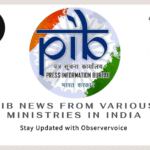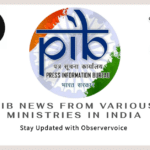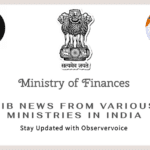Every year on November 17th, Slovakia commemorates a pivotal moment in its history with the Day of Freedom and Democracy. This day marks the anniversary of the 1989 Velvet Revolution, which saw the peaceful overthrow of the then-authoritarian regime. It’s a day that honors the courage and determination of the Slovak people who stood up for their rights and laid the foundation for a society built on democratic principles. The celebrations are not just about remembering the past; they’re a reminder of the value of freedom and the ongoing commitment to democracy that continues to shape Slovakia’s future. It’s a day of reflection, appreciation, and hope for continued progress and prosperity in the heart of Europe.
About Slovakia, Moracco, Oman, Czech Republic
Slovakia Slovakia’s history dates back to the Paleolithic era, with the discovery of ancient tools near Nové Mesto nad Váhom. The Celtic Boii tribe inhabited the region in the 1st century BC, followed by the Germanic and Slavic peoples. In the 14th century, under the reign of Charles IV, Bohemia became rich and powerful. Slovakia was part of the Austro-Hungarian Empire until its dissolution after World War I, leading to the formation of Czechoslovakia. Slovakia declared independence and became a separate republic on January 1, 1993.
Morocco The history of Morocco spans over 100,000 years, starting from the Lower Paleolithic period. It was part of the Iberomaurusian culture, including Taforalt. The region was impacted by powerful invaders, including other Arab tribes, Portugal, and Britain. Morocco once possessed the island of Zanzibar on the east coast of Africa as a colony. The Saadi dynasty ruled the country from 1549 to 1659, followed by the Alaouites from 1667 onwards. Morocco gained independence in 1956.
Oman Oman’s history stretches back over 100,000 years, with evidence of human habitation during the Middle Stone Age. The region was impacted by powerful invaders, including other Arab tribes, Portugal, and Britain. Oman once possessed the island of Zanzibar on the east coast of Africa and Gwadar as colonies. The Idrisid dynasty established the Moroccan state, followed by other Islamic dynasties.
Czech Republic The history of the Czech Republic began with the Celtic Boii tribe in the 4th century BC. The region was later ruled by the Germanic tribe and the Slavic peoples. In the 14th century, under the reign of Charles IV, Bohemia became rich and powerful. The region was part of the Austro-Hungarian Empire until its dissolution after World War I, leading to the formation of Czechoslovakia. The Czech Republic emerged from over 40 years of Communist rule in 1990, and was the first former Eastern Bloc state to acquire the status of a developed economy. It joined the European Union in 2004.
HISTORY OF DAY OF FREEDOM AND DEMOCRACY IN SLOVAKIA
The Day of Freedom and Democracy is a significant public holiday in Slovakia, observed annually on November 17th to honor two pivotal moments in the nation’s history. The first event commemorated is the student demonstration against Nazi occupation in 1939, which resulted in the tragic execution of nine student leaders and the internment of over 1200 students in concentration camps. The second event, which took place exactly 50 years later, is the demonstration in 1989 in Prague that marked the beginning of the Velvet Revolution. This peaceful uprising played a crucial role in the fall of the communist regime in Czechoslovakia. The Velvet Revolution is a testament to the power of non-violent protest and the resilience of citizens in the face of oppression. It ultimately led to the election of Vaclav Havel as president and Alexander Dubcek as federal Czechoslovak Speaker, signaling a new era of freedom and democracy for the Slovak people.
SIGNIFICANCE OF DAY OF FREEDOM AND DEMOCRACY IN SLOVAKIA
The Day of Freedom and Democracy is a significant public holiday in Slovakia, observed annually on November 17th. It commemorates two pivotal moments in Slovak history: the student demonstration against Nazi occupation in 1939, and the 1989 demonstration in Prague that marked the beginning of the Velvet Revolution. This day honors the courage of students who stood against oppression and played a crucial role in the country’s struggle for freedom, leading to the end of communist rule in Czechoslovakia.
DAY OF FREEDOM AND DEMOCRACY IN SLOVAKIA CELEBRATION
The Day of Freedom and Democracy is a significant public holiday in Slovakia, commemorated annually on November 17th. It marks the anniversary of the Velvet Revolution in 1989, which led to the fall of the communist regime in Czechoslovakia. The day is a tribute to the students and citizens who stood up for their rights and freedoms, sparking a series of nonviolent protests that ultimately resulted in the peaceful transition to democracy. This day serves as a reminder of the power of peaceful protest and the importance of democratic values in shaping the future of a nation.
DAY OF FREEDOM AND DEMOCRACY IN SLOVAKIA ACTIVITIES
- Commemorate the day with a visit to the National Avenue in Prague, where a candlelight memorial is often held at the V for Victory memorial plaque.
- Participate in local events and gatherings that celebrate the day, such as concerts, public readings, and historical exhibitions.
- Engage in discussions or attend lectures about the significance of the Velvet Revolution and the role of students in the fight for democracy.
- Join in the symbolic act of jingling keys, which was used during the Gentle Revolution as a sign of unlocking democracy.
- Reflect on the importance of civil liberties and democratic values by visiting monuments and museums dedicated to the memory of those who fought for freedom.
- Wear national colors or symbols to show solidarity and honor the history of Slovakia’s journey towards freedom and democracy.
- Educate younger generations about the historical events of 1939 and 1989, ensuring the legacy of these pivotal moments is passed on.
FACTS ABOUT DAY OF FREEDOM AND DEMOCRACY IN SLOVAKIA
Here are some interesting facts about DAY OF FREEDOM AND DEMOCRACY IN SLOVAKIA:
- The Day of Freedom and Democracy is a significant public holiday in Slovakia, observed annually on November 17th.
- This day commemorates two pivotal events in Slovak history: the student demonstration against Nazi occupation in 1939 and the demonstration in 1989 that marked the beginning of the Velvet Revolution.
- The 1939 protest was a response to the Nazi storming of the University of Prague, which resulted in the execution of nine student leaders and the internment of over 1200 students in concentration camps.
- The 1989 demonstration was initially a peaceful commemorative march for the 50th anniversary of the 1939 student revolt but escalated into a series of protests that led to the fall of the communist regime in Czechoslovakia.
- These events highlight the courage and political activism of students, who played a crucial role in the country’s struggle for freedom and democracy.
- The Velvet Revolution is celebrated for its non-violent nature and its success in transitioning Czechoslovakia from a communist state to a parliamentary republic.
- Vaclav Havel, a prominent figure in the Velvet Revolution, was elected president, and Alexander Dubcek became the federal Czechoslovak Speaker following the revolution.
- The Day of Freedom and Democracy is a reminder of the importance of civic engagement and the impact that collective action can have on shaping a nation’s future.
Observer Voice is the one stop site for National, International news, Editor’s Choice, Art/culture contents, Quotes and much more. We also cover historical contents. Historical contents includes World History, Indian History, and what happened today. The website also covers Entertainment across the India and World.
Follow Us on Twitter, Instagram, Facebook, & LinkedIn










